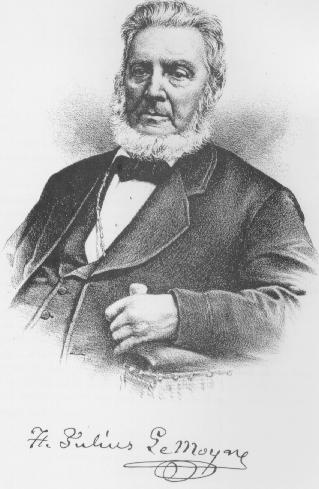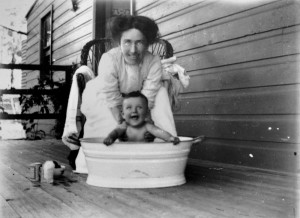Water worried Dr. Francis Julius LeMoyne, but he was fine with fire. The nineteenth-century Pennsylvania doctor thought that washing the skin was hazardous and that bodies buried in cemeteries were poisoning the drinking water. This latter belief drove him to found America’s first crematorium. Not even four dozen bodies were reduced to dust at the LeMoyne crematorium during its 25 years of existence, but it still was a landmark operation. From an article about the physician in the February 14, 1878 New York Times:
“Mrs. Jane Pitman, of Cincinnati, who is to be cremated in Dr. Le Moyne’s cremating furnace at Washington, Penn., to-morrow, will be the first woman who has ever been cremated in this country, if not the first in modern times. The only cremation of note that has ever taken place in this country, was that of Joseph Henry Louis, Baron de Palm, of New-York, whose body was burned in the same retort, on the 6th of December, 1876. This furnace is the only one if its kind in the United States. It was built in the Fall of 1876 by Dr. F. Julius Le Moyne, a wealthy and eccentric citizen of Washington, Penn. Dr. Le Moyne’s father was a French physician, who settled in the little town of Washington in the early days of Western Pennsylvania, soon acquired a large practice among the mountaineers who then inhabited that part of the country, and died leaving a large fortune. The son, the present Dr. Le Moyne, has for years been well-known throughout the Western part of Pennsylvania. He was a rabid Abolitionist, and in 1844 was prominently named on the Liberal ticket as a candidate for the Vice-Presidency, Gerritt Smith heading the ticket; but Dr. Le Moyne declined to run. A number of years ago he became interested in the subject of cremation, and, after giving the question long consideration, decided that when he died his body should be burned. He proposed to the owners of the Washington Cemetery to build a cremation furnace on their grounds; but as they declined the offer, he built one on his own land, on a high hill about a mile and a half from the village, known as Gallows Hill, it having formerly been the place of execution for Washington County.
The building is a small brick structure, divided into two rooms, one for the reception of bodies, containing a cabinet for holding the ashes of cremated bodies, and the other containing the furnace proper, a huge gas retort substantially built over a long, deep furnace. The door of the retort does not swing on hinges, but is held in place by strong iron screws, and when a body is put in it is ‘luted’ with cement, to make the chamber perfectly air-tight. At the time of the cremation of Baron de Palm the furnace fire was started at 2 o’clock on the morning of the 5th, and was kept in full blast till 8:30 o’clock on the morning of the 6th, when the body was put in. The retort is made of fire-brick, and by noon of the first day it was at white heat. Baron de Palm’s body was laid in an iron frame shaped like a cradle, carefully wrapped in a winding sheet soaked in alum water, to prevent it from burning rapidly. When it came time to put it in the retort, there was a discussion between Dr. Le Moyne and Col. Olcott as to which end should go in first. Col. Olcott thought the feet should go first, but Dr. Le Moyne insisted that head first was the proper way, and head first it went. As the body was shoved into the furnace, there was a little smoke and a slight smell of burning flesh, but after this no odor was perceptible. The door was immediately fastened on, and the cremation began.
A small hole through the door of the retort afforded a chance to watch the progress of the experiment. Five minutes after the body was put in the furnace was dark inside. In seven minutes a thick white smoke could be seen. In 15 minutes the retort was lighted up, and the body could be seen distinctly. By 9:45 the head had separated from the body and rolled to one side; the flesh had all disappeared, and all the bones but skull were red-hot. At 11 o’clock, after two and a half hours of burning, the skeleton was almost entire, and white hot in every part. It was a skeleton of fire. Soon afterward it began to show signs of crumbling, and by 12:30 the cremation was pronounced complete. Some of the larger bones still retained their shape, but they needed only a breath of air to reduce them to ashes. …
The first body cremated in the furnace was that of a sheep, which, Dr. Le Moyne burned for a trial. It was even reduced to grayish ashes, and now ornaments one of the counters in Dr. Le Monye’s office. done up in a glass jar. Dr. Le Moyne has another theory, almost as singular as that of cremation. He is said to believe that the application of water to the body is injurious to the health, and to carry out his theory he recommends an occasional scraping with the back of a table-knife instead of the usual ablutions.”


